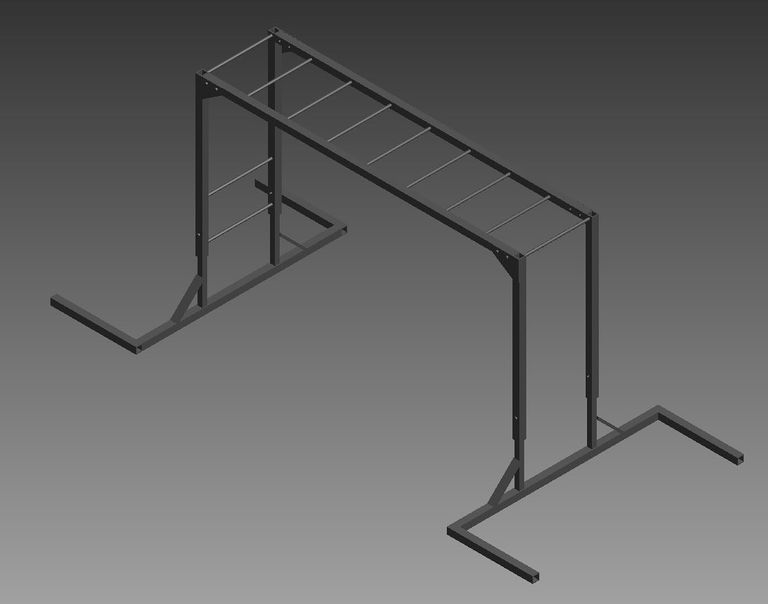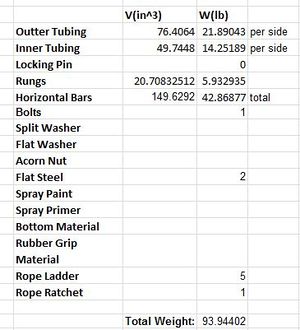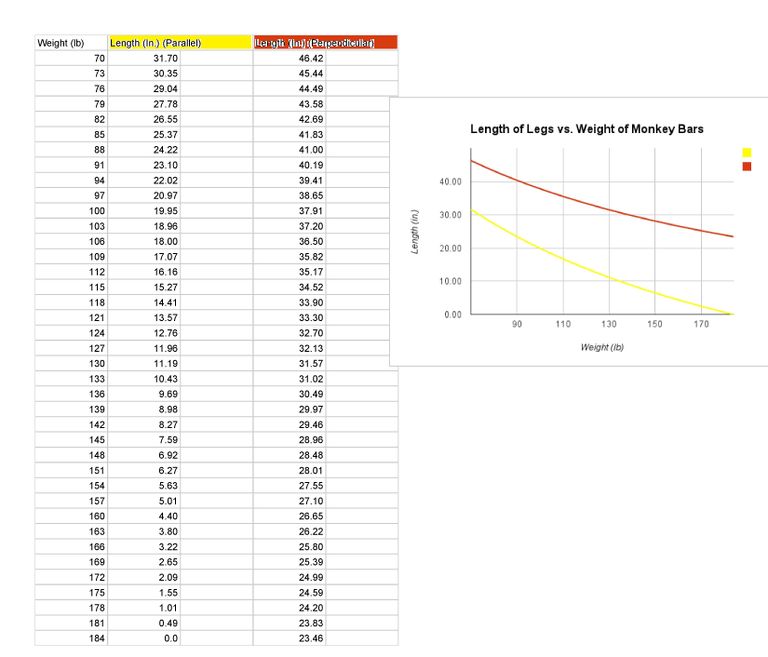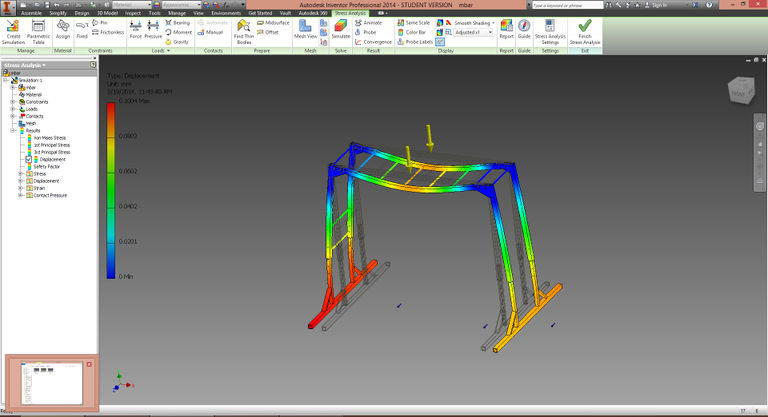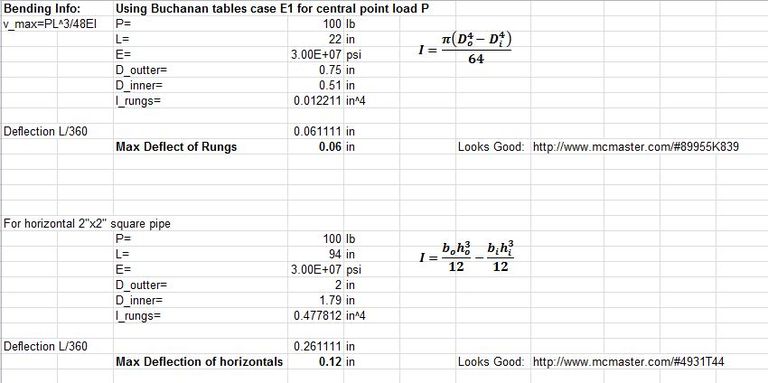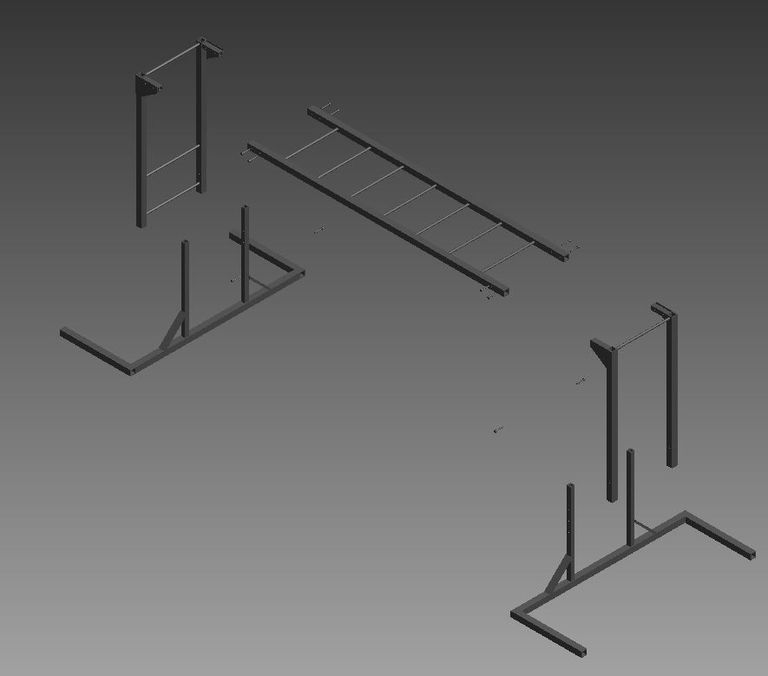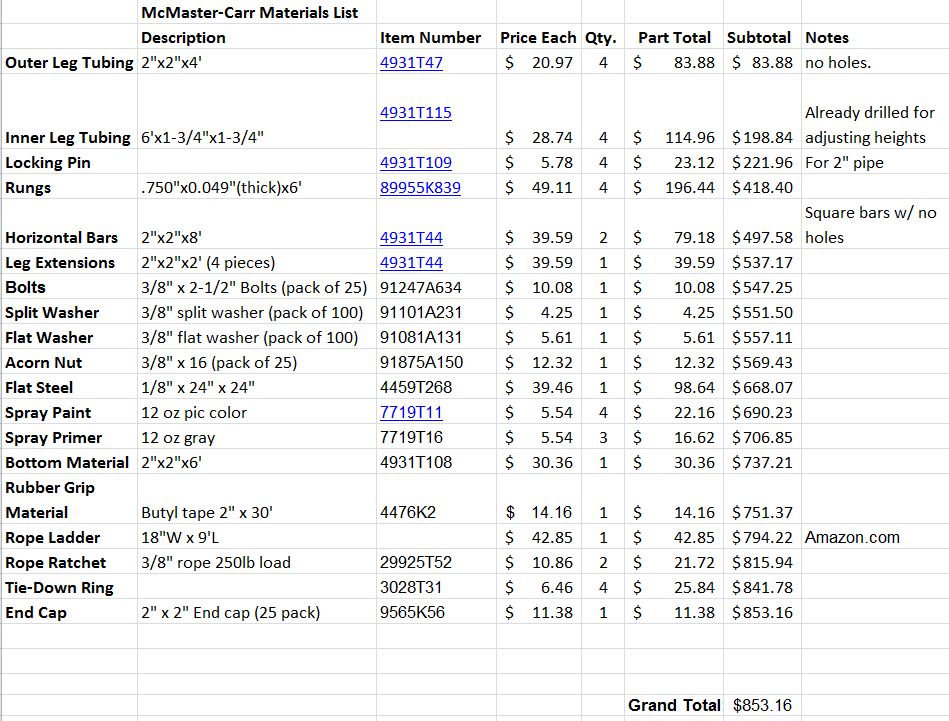Indoor Gym Arm Exercise S14
Abstract
Design and build a mobile monkey bar system. It must be adjustable in height, and capable of being transported by hand and in a truck.
Team members
1. David Sierra
2. Kyle Bieze
3. Willem Spivey
4. Nessreen Heidemann
5. Hussain Al Haydar
6. Gerald Alexander
Professor: Stephen Canfield
Physical Therapist: Melissa Draper
Shop Tech: Jeffrey Randolph
Shop Hand: Kaleb Stephens
Problem Statement/overview of the need
Melissa Draper, our contact, desires to have an adjustable, mobile monkey bar system for students with special needs. The monkey bar system needs to be light enough for one to carry, either folded or in sections. It needs to be able to fit in the back of a truck, either folded or in sections. It needs to be a free standing structure that is strong and stable enough to hold 200 lbs. It needs to be safe for children to play on: sharp edges, and pinch points cannot exist.
Design Specifications
1. Light Enough for one person to carry. (Either folded or in sections)
2. SAFE FOR CHILDREN. No sharp edges, pinch points, etc.
3. Height adjustable. Range of 60-85 inches tall.
4. Weight capacity of 200 lbs.
5. Length of 8-10 feet.
Conceptual Design
Design Concept 1
Monkey Bars as seen in photo with added rungs on ladder side and added rope ladder.
Pros
Strong joint connections
Easy Setup/Breakdown
Cons
Possible tipping on end with shorter support.
Design Concept 2
Pros
Strong joint connections
Easy Setup/Breakdown
Adds harness for children with lower body disability or less grip strength.
Cons
Possible tipping on end with shorter support.
Getting child in and out of the harness.
Design Concept 3
Pros
Easy Setup/Breakdown
Adds ramp option for children to climb.
Adds a rings option to where the rope ladder would otherwise be.
Cons
Less strong joint connections
Possible tipping on end with shorter support.
May need extra support under mid-ramp section; high torque load on that connection.
Evaluate concepts/select candidate
Final Design candidate is a modified version of Concept 1. There will be no ramp capability, but it shall be more stable. There will be no harness capability, but this will both reduce weight and cost. The joints will be bolted together and can be taken apart with a few hand tools (wrenches and/or ratchets). The rope ladder will be detachable and have an adjustable foot anchoring system to allow variable degrees of flex in response to climbing. In place of rings, a trapeze bar will be made that is attachable/detachable to the horizontal portion of the structure.
Pictures will be provided in the detailed design section.
Detailed Design
Description of selected design
Assembly Complete: Shows final construction of assembly pinned at a medium height. Link to full size image: Media:mbar.jpg.
The selected design has been modified from Concept Design 1 in order to create a more symmetric and stable structure. The new design utilizes sides that are nearly mirror images, with the exception of some rungs for climbing on one side and attachments for a rope ladder on the other. For simplicity, the rung where the rope ladder attaches shall be referred to as the rope support. The horizontal length will be referred to as the bridge.
This design was chosen to maximize stability while maintaining the ability to be easily broken down into parts which can then be transported and reassembled at another location. The materials were chosen for their rigidity and weight as well as their ability to be welded and painted.
Note: Dimensions are shown in the AutoCAD drawings below. Bolts are accompanied by washers and nuts.
Analysis
Engineering analysis 1: Tipping Prevention
An analysis of supporting legs comparing weight and the length of the legs necessary to prevent tipping are used with an approximate weight calculation to find the necessary length of the legs on the monkey bars.
Engineering analysis 2: Deflection Consideration (Bridge)
Inventor generated analysis of deflection considering 200 lb. weight on the monkey bars. The deflection is greatly exaggerated by the photo with the max deflection of 0.1004mm.
Engineering analysis 3: Deflection Consideration (Rungs and Bridge)
Analysis of deflection considering maximum weight expected on the monkey bars. This is a manual calculation concerning the deflection of both the bridge spanning bars and the rungs. The results match, almost exactly, with the values generated by Inventor. Also included is a standard calculation using L/360 for allowable deflection, which can be seen to closely match our other values.
CAD Drawings
Assembly Exploded: Shows all parts separately without breaking welds. Endcaps are not shown on exposed pipe ends.
Bill of Materials
This is the bill of materials. Most of these materials are available on McMaster-Carr's website. The rope ladder is available on amazon.com. Total number of raw parts: 41.
Assembly Instructions
COMING SOON.
Fabrication Process
Insert pictures of fabrication process
Photos of Completed design
Insert pictures of the final product
Instructions for safe use
Provide a clear summary of safe use for the family. Do not use the device unless supervised by an adult that has been fully understood the safe use of this product.




